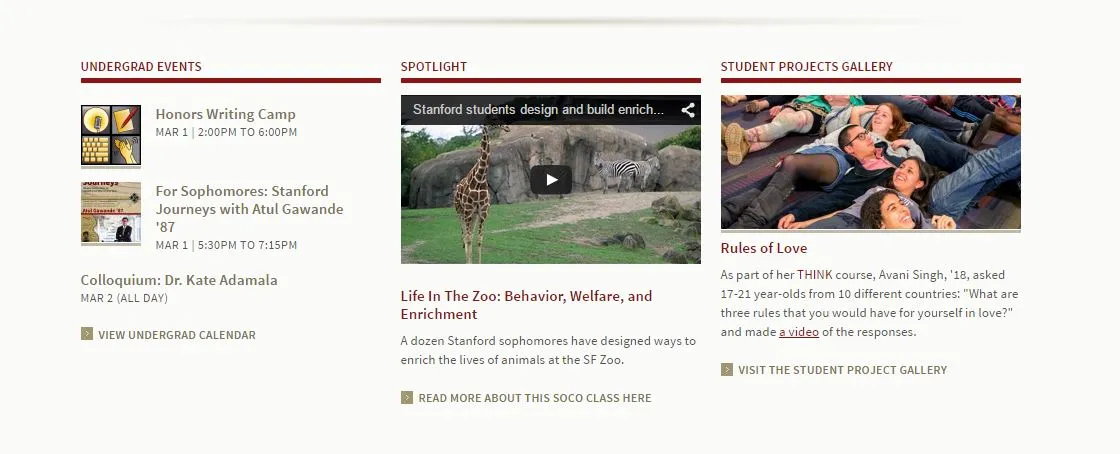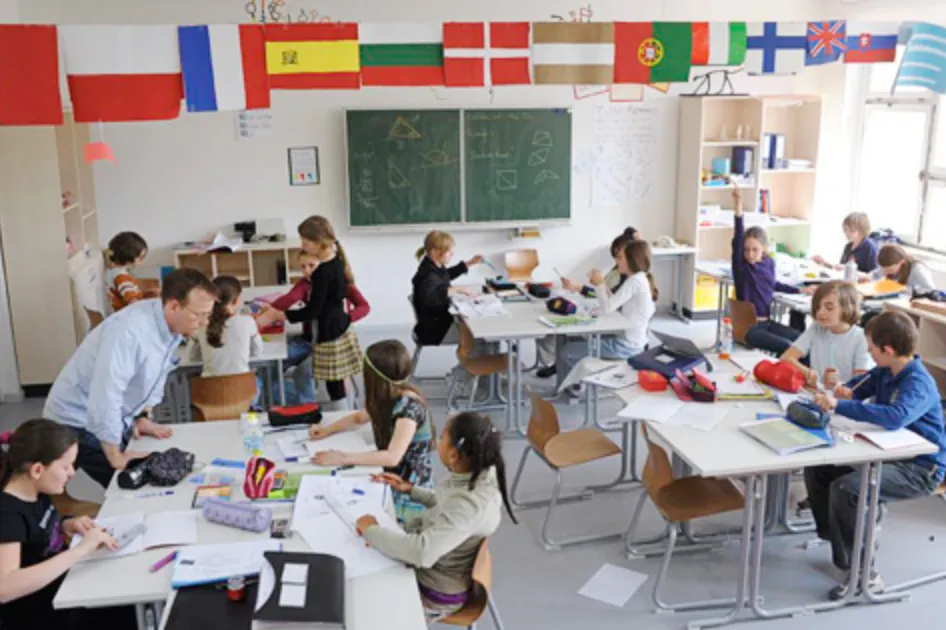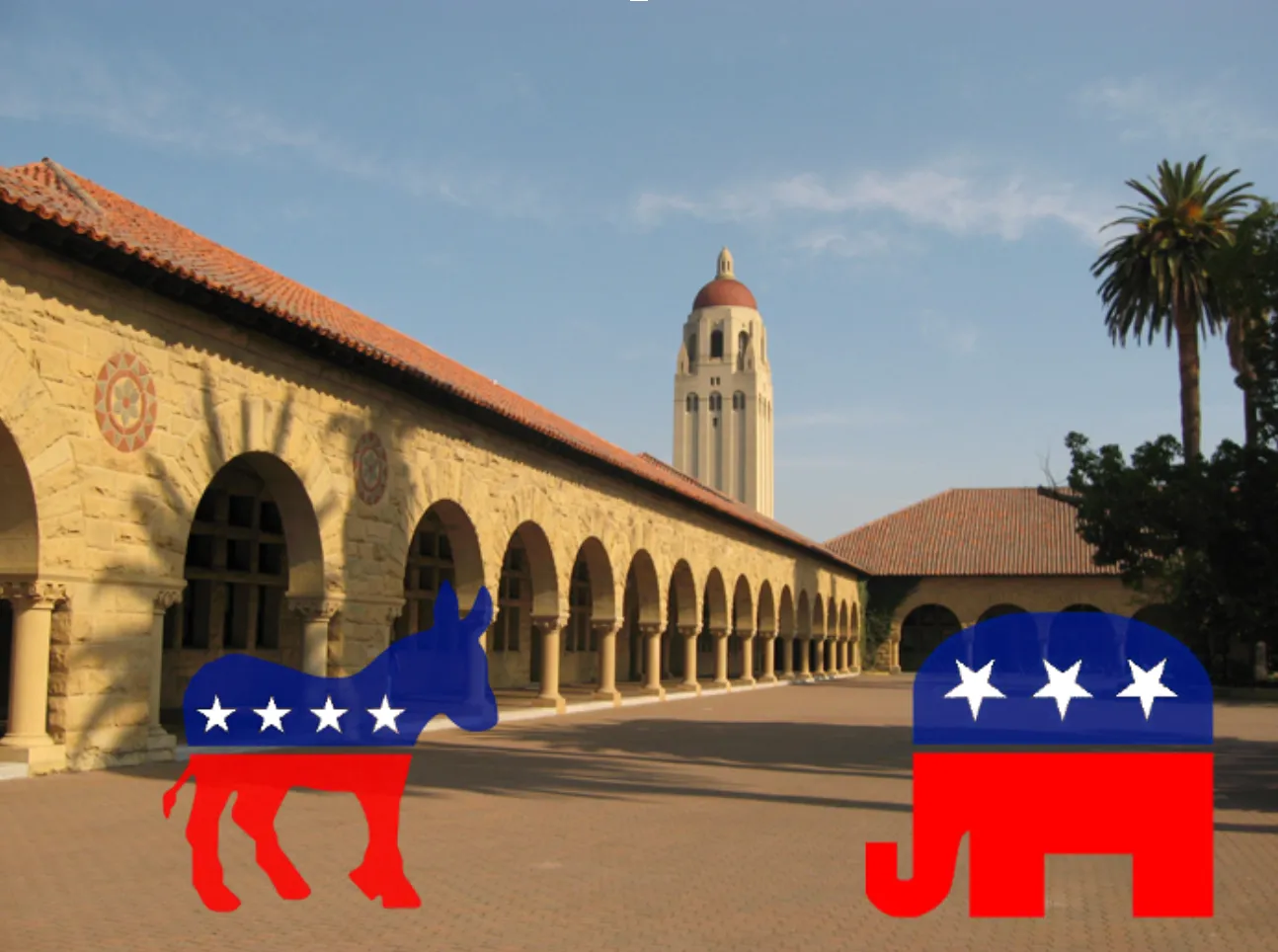Table of Contents
Today’s Stanford Report included this item at the bottom:
Your thoughts on ROTC sought: The Ad Hoc Committee on ROTC is seeking input from members of the campus community about whether and in what form Stanford should expand its relationship with Reserve Officers’ Training Corps programs. Faculty, staff and students are invited to submit letters to the committee by mail c/o Ingrid Deiwiks, E115 Encina Hall, Freeman Spogli Institute for International Studies, Stanford University, Stanford, CA 94305-6055; or by email. Further information on the issues on which the committee seeks input as well as background materials on the topic are available on the ROTC Committee website.
ROTC’s history on campus has been touched on elsewhere, but the letter to campus (PDF) asking for comment provides more details. Here are some highlights:
During the WWII period, ROTC candidates made up 50 percent of the undergraduate male population. ROTC candidates made up an ever declining proportion of students after that period, but still numbered almost 400 at the height of the Vietnam War.
In February 1969, the Faculty Senate voted 75% to 25% to phase out academic credit for ROTC programs. What did students think of this? Aren’t they the radicals that pushed against the army? I guess not: later that month, students voted by a 60% to 40% margin that “ROTC has a legitimate place on the campus and deserves the support and credit from the University for all those parts of the program that are of genuine academic interest.”
In early 1970, the Faculty Senate agreed to offer academic credit on a course-by-course basis to ROTC courses, but reversed course after the war escalated with the U.S. invasion of Cambodia, ultimately resulting in the decision to phase out academic credit by 1973. The ASSU Senate (then a larger, combined entity) agreed and passed a resolution against allowing any group designed for military training to be designated a VSO.
The letter outlines the current points that must be considered in terms of reinstating ROTC, namely:
(a) any proposed Stanford-ROTC program would have to pass muster “as a compatible and worthwhile academic endeavor,” (b) the value of such a program to Stanford and the nation is still viewed by some as ‘high’ and by others as ‘low’, (c) the potential conflicts resulting from educating an apolitical officer corps within an intellectually engaged student body have to be addressed, (d) students’ freedom of choice is still a relevant concern, and (e) the nation is currently at war. However, the present context differs from the earlier one, because (f) we now have an all-volunteer military, thereby rendering moot the earlier concerns over the punitive clauses in student contracts, (g) the arguments for or against terminating an existing program do not necessarily map into arguments against or for (respectively) reinstating an amended version of that program, and (h) the military is now subject to the controversial, Congressionally mandated policy of “Don’t Ask, Don’t Tell” (DADT)
With this history and these points, what should happen with ROTC? I think that the value of streamlining Stanford-educated students into the officer corps holds enormous value. We are currently facing a future in which the face of the military looks less and less like the face of Stanford students. The military is disproportionately from the South and while socioeconomic concerns are actually not as strong as one might imagine, adding officers of Stanford’s caliber to the US military is an extremely worthwhile venture. Especially in the case where DADT is repealed, I firmly believe that ROTC should return to campus. What do you think (email)?







